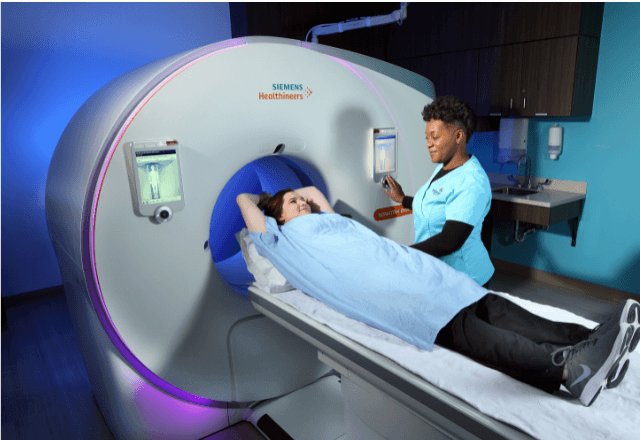Respiratory System Radiology Testing in Laboratory Animals
The respiratory system radiology testing of laboratory animals is a critical component within clinical and healthcare testing. This service involves the imaging analysis of the respiratory tract, including the lungs, bronchi, trachea, and pleura, to assess normal physiology or diagnose pathologies associated with these organs.
Respiratory System Radiology Testing in Laboratory Animals plays an essential role in preclinical research, compliance testing, and R&D activities. This service is vital for understanding the effects of pharmaceuticals, biologics, medical devices, and other therapeutic interventions on the respiratory system of laboratory animals. The imaging techniques used include X-ray and computed tomography (CT) scans.
For this testing, we utilize high-resolution imaging equipment that ensures precise visualization of even the smallest structures within the lungs and airways. Preparing specimens for radiology testing involves careful handling to maintain the integrity of the respiratory system anatomy during imaging. The primary goal is to minimize stress on the animals while ensuring accurate diagnostic information.
Our service adheres to strict international standards such as ISO 17025, which ensures that our laboratory meets the highest quality requirements for testing and calibration services. Our radiology team comprises highly skilled professionals with expertise in both imaging technology and animal physiology.
| Parameter | Description |
|---|---|
| Imaging Techniques | X-ray, CT scans |
| Animal Preparation | Anesthesia and immobilization for safety |
| Specimen Handling | Careful handling to maintain anatomical integrity |
| Equipment Standards | ISO 17025 certified equipment |
| Data Interpretation | Expert radiologists with experience in respiratory systems |
In our testing, we ensure that the imaging processes are as non-invasive and stress-free as possible for laboratory animals. This approach is crucial to maintain ethical standards in preclinical research.
International Acceptance and Recognition
The respiratory system radiology testing of laboratory animals has gained significant international acceptance and recognition, especially within the realm of preclinical research and compliance testing. This service is widely used across various sectors including pharmaceuticals, biologics, and medical devices.
The testing ensures that pharmaceutical companies can accurately assess the effects of their products on the respiratory systems of laboratory animals before advancing to human clinical trials. Compliance with international standards such as ISO 17025 adds credibility to the results, making them acceptable in regulatory submissions worldwide.
Our service is recognized by major regulatory bodies including the United States Food and Drug Administration (FDA) and the European Medicines Agency (EMA). This recognition ensures that our testing methods are consistent with global best practices. The acceptance of these tests allows for smoother compliance processes, reducing delays in product development cycles.
Competitive Advantage and Market Impact
- Compliance with international standards such as ISO 17025
- Highly skilled radiologists specializing in respiratory systems
- Use of advanced imaging techniques like X-ray and CT scans
- Careful specimen handling to maintain anatomical integrity
- Non-invasive testing processes minimizing animal stress
- Expert interpretation of imaging data for accurate diagnosis
- Recognition by major regulatory bodies such as the FDA and EMA
The competitive advantage lies in our ability to provide reliable, consistent results that meet international standards. This ensures that pharmaceutical companies can trust our testing methods, leading to smoother compliance processes and fewer delays. Our service plays a significant role in advancing product development cycles while maintaining ethical standards.
Use Cases and Application Examples
The use cases for respiratory system radiology testing in laboratory animals are diverse and include the evaluation of the effects of new drugs, biologics, and medical devices on the respiratory system. This testing is also used to assess the safety profile of these products before they can be tested on humans.
| Use Case | Application Example |
|---|---|
| Evaluation of drug effects | Testing the impact of an inhaled asthma medication |
| Safety assessment | Assessing the respiratory toxicity of a new nanoparticle-based therapy |
| Device evaluation | Evaluating the safety and efficacy of a novel bronchoscope |
| New biologic testing | Testing an inhaled biologic for chronic obstructive pulmonary disease (COPD) |
| Safety profile assessment | Evaluating the respiratory safety profile of a new vaccine |
| Toxicity evaluation | Evaluating the long-term respiratory toxicity of an inhaled pesticide |
| Pharmacokinetics | Determining the pharmacokinetic profile of a new inhalation therapy |
| New inhaler device testing | Testing the performance and safety of a novel inhaler device for asthma treatment |
The application examples demonstrate the versatility of this service in addressing various aspects of preclinical research. The results from these tests are invaluable in ensuring that new pharmaceuticals, biologics, and medical devices meet stringent safety and efficacy standards.





